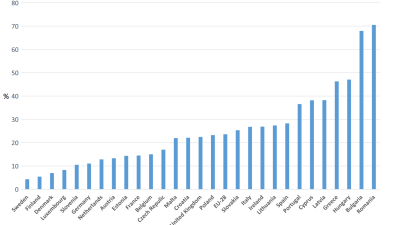Levels of deprivation in the largest seaside destinations in England have been highlighted in an analysis from the Office for National Statistics, based on the official indices of deprivation. It says the largest resorts, such as Blackpool, generally have greater levels of deprivation than the rest of England.
Key points
- For the first time, the ONS has defined the 57 largest seaside destinations in England in terms of the resident population of constituent areas, and conducted an analysis of them using the official indices of deprivation.
- The three most deprived destinations of the 57 analysed are Skegness, Blackpool and Clacton.
- Larger destinations generally had greater levels of deprivation than the rest of England in 2007 and 2010 (with the exceptions of Christchurch, Lytham St Annes, Poole, Worthing, Southport and Bognor Regis).
- Mid-sized destinations tend to have lower levels of deprivation than larger ones, and a wider range of deprivation levels. The mid-sized destinations include the most deprived destination (Skegness and Ingoldmells) and the least deprived (Formby) found in the analysis.
- There are large differences in the levels of deprivation faced by destinations that are adjacent to each other: Blackpool is the most deprived larger destination: but it borders Lytham St Annes, which has the second lowest deprivation level of the larger destinations.
- The patterns of deprivation faced by seaside destinations in 2010 were similar to those found in a previous analysis in 2007.
The ONS analysis follows a recent report from the Centre for Social Justice – Turning the Tide: Social Justice in Five Seaside Towns – highlighting levels of spending on benefit payments to people of working age living in seaside towns.
Source: Phil Humby, A Profile of Deprivation in Larger English Seaside Destinations, 2007 and 2010, Office for National Statistics
Links: Report | Daily Mail report | Guardian report | Public Finance report



 PSE:UK is a major collaboration between the University of Bristol, Heriot-Watt University, The Open University, Queen's University Belfast, University of Glasgow and the University of York working with the National Centre for Social Research and the Northern Ireland Statistics and Research Agency. ESRC Grant RES-060-25-0052.
PSE:UK is a major collaboration between the University of Bristol, Heriot-Watt University, The Open University, Queen's University Belfast, University of Glasgow and the University of York working with the National Centre for Social Research and the Northern Ireland Statistics and Research Agency. ESRC Grant RES-060-25-0052.






